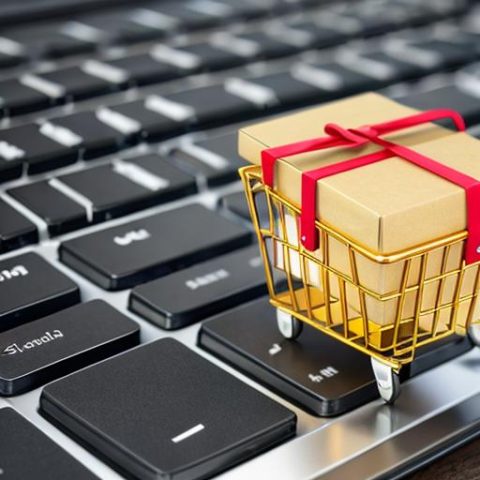Introduction:
In the world of online commerce, understanding the 4 stages of e-commerce is crucial. The ecommerce conversion funnel acts as a guide, leading potential customers from discovery to purchase. It’s vital for businesses to grasp this funnel, as it outlines the journey users take from awareness to action. By comprehending this journey, businesses can tailor their strategies to meet customer needs and boost conversion rates effectively, ultimately driving revenue.
– 4 stages of e commerce:
Understanding the 4 stages of e-commerce is pivotal for online businesses. These stages, including awareness, interest, decision, and action, delineate the customer journey from initial discovery to final purchase, guiding businesses in optimizing their strategies for success in the digital marketplace.
1- Ecommerce Conversion Funnel
In the vast landscape of online commerce, understanding the journey customers take from initial awareness to final purchase is crucial for success. This journey is encapsulated in the ecommerce conversion funnel, a framework that guides businesses in optimizing their sales process. Let’s enter the 4 stages of e-commerce conversion and explore how analytics tools can enhance this journey.
2- Understanding the Ecommerce Conversion Funnel
The 4 stages of e-commerce conversion funnel consist of Awareness, Interest, Decision, and Action. Each stage plays a crucial role in guiding customers towards making a purchase.
-
Awareness Stage
-
Attracting Potential Customers
At the awareness stage, the goal is to attract potential customers to your website. This can be achieved through various marketing channels such as social media, content marketing, and search engine optimization (SEO).
-
Creating Engaging Content
Engaging content is key to capturing the attention of potential customers at the awareness stage. Whether it’s blog posts, videos, or social media content, providing valuable information that resonates with your target audience can help build brand awareness and drive traffic to your site.
-
Interest Stage
-
Capturing Customer Interest
Once potential customers are aware of your brand, the interest stage focuses on capturing their interest and keeping them engaged. This can be achieved through personalized product recommendations, email marketing campaigns, and targeted advertising.
-
Providing Relevant Information
At the interesting stage, customers are seeking more information about your products or services. Providing relevant and informative content, such as product descriptions, reviews, and testimonials, can help address their questions and concerns, leading to increased trust and interest in making a purchase.
-
Decision Stage
-
Encouraging Purchase Intent
The decision stage is where customers are ready to make a purchase decision. Encouraging purchase intent through incentives such as discounts, free shipping, or limited time offers can help push customers towards completing their purchase.
-
Facilitating Smooth Transactions
Smooth transactions are essential at the decision stage to prevent cart abandonment and ensure a positive buying experience. Streamlining the checkout process, offering multiple payment options, and providing clear shipping and return policies can help alleviate any barriers to purchase.
-
Action Stage
-
Completing Transactions
The action stage is where customers complete their transactions and make a purchase. Ensuring a smooth and frictionless checkout process is crucial at this stage to minimize drop-offs and maximize conversions.
-
Ensuring Customer Satisfaction
Customer satisfaction doesn’t end with the purchase. Following up with customers post-purchase, providing excellent customer service, and soliciting feedback can help foster long-term relationships and encourage repeat business.
3- Utilizing Analytics Tools for Ecommerce Conversions
In today’s digital age, data-driven insights are invaluable for optimizing ecommerce conversions. Analytics tools provide businesses with the necessary data to understand customer behavior, track key metrics, and make informed decisions.
-
Importance of Analytics in Ecommerce
-
Tracking Customer Behavior
Analytics tools allow businesses to track customer behavior at every stage of the conversion funnel. From website visits to product views and purchases, analyzing this data provides valuable insights into customer preferences and trends.
-
Understanding Market Trends
By analyzing market trends and competitor performance, businesses can identify opportunities for growth and stay ahead of the competition. Analytics tools provide real-time data on market dynamics, enabling businesses to adapt their strategies accordingly.
-
Popular Analytics Tools for Ecommerce
-
Google Analytics
Google Analytics is a powerful tool for tracking website traffic, user engagement, and conversion metrics. With its robust reporting features and customizable dashboards, businesses can gain deep insights into their ecommerce performance.
-
Kissmetrics
Kissmetrics is another analytics platform tailored specifically for ecommerce businesses. It offers advanced analytics and customer segmentation capabilities, allowing businesses to track individual customer journeys and personalize their marketing efforts.
4- Key Performance Indicators (KPIs) for Ecommerce
Key performance indicators (KPIs) are essential metrics that help businesses measure their performance and track progress towards their goals. In the context of ecommerce, several KPIs are particularly important for optimizing conversions.
-
Revenue Metrics
-
Conversion Rate
The conversion rate measures the percentage of website visitors who complete a desired action, such as making a purchase. Monitoring and optimizing conversion rates are crucial for maximizing revenue and ROI.
-
Average Order Value
The average order value (AOV) represents the average amount spent by customers per transaction. Increasing AOV through upselling, cross-selling, and bundling strategies can significantly impact overall revenue.
-
Customer Engagement Metrics
-
Click-Through Rate (CTR)
The click-through rate (CTR) measures the percentage of users who click on a specific link or advertisement. A high CTR indicates that your content is engaging and relevant to your target audience.
-
Customer Lifetime Value (CLV)
Customer lifetime value (CLV) quantifies the total value a customer brings to your business over their entire relationship with your brand. Increasing CLV through customer retention and loyalty programs is essential for long-term success.
-
Operational Metrics
-
Cart Abandonment Rate
Cart abandonment rate measures the percentage of users who add items to their cart but leave before completing the purchase. Reducing cart abandonment through strategies such as remarketing and cart recovery emails can help increase conversions.
-
Return on Investment (ROI)
Return on investment (ROI) calculates the profitability of marketing campaigns and initiatives. By tracking ROI for different channels and campaigns, businesses can allocate their resources more effectively and optimize their marketing spending.
Conclusion:
In conclusion, grasping the significance of the ecommerce conversion funnel and harnessing analytics tools and KPIs are crucial for enhancing conversions and boosting revenue in the dynamic realm of online trade. By delving into the 4 stages of e-commerce, dissecting customer data, and monitoring vital metrics, businesses can adeptly steer customers through the path from awareness to action, resulting in heightened sales.
FAQ:
1- What are the key stages of ecommerce?
The key stages of ecommerce refer to the stage’s customers go through in the conversion funnel, which include awareness, interest, decision, and action. These stages represent the journey from initial discovery to final purchase.
2- What are the steps of e-commerce?
The steps of e-commerce typically involve product or service selection, shopping cart creation, checkout and payment processing, order fulfillment, and post-purchase support and feedback.
3- What are the key stages of ecommerce?
The key stages of ecommerce refer to the stage’s customers go through in the conversion funnel, which include awareness, interest, decision, and action. These stages represent the journey from initial discovery to final purchase.
4- What are the 4 basic categories of e-commerce?
The four basic categories of e-commerce are Business-to-Consumer (B2C), Business-to-Business (B2B), Consumer-to-Consumer (C2C), and Consumer-to-Business (C2B).






